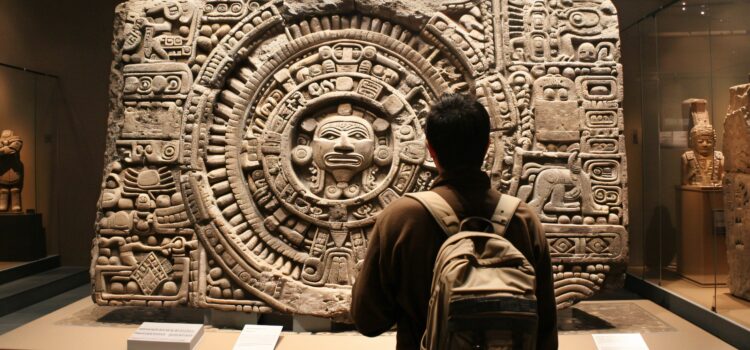
In the vast canvas of human history, Ancient Artz has stood as a testament to our ancestors’ creativity, beliefs, and understanding of the world. Over time, the term “ancient artz” has come to represent a wide array of artistic expressions that range from cave paintings to monumental sculptures, jewelry, and pottery. Each artifact offers a glimpse into the values, religions, myths, and daily life of ancient civilizations. This article delves into the fascinating world of ancient artz, highlighting its profound impact on both the societies that created it and the modern cultures that continue to draw inspiration from its legacy.
Origins of Ancient Artz: Expressions of Survival and Belief
The earliest forms of Ancient Artz were created as expressions of survival, religious beliefs, and community identity. Dating back tens of thousands of years, the art of prehistoric people primarily consisted of rock engravings, cave paintings, and small sculptures. The famous cave paintings in Lascaux, France, depict wild animals and hunting scenes, suggesting that early humans used art as a way to communicate important survival information and religious rituals.
In regions such as Africa, Asia, and Europe, the earliest known sculptures, such as the Venus figurines, were created around 25,000 to 30,000 years ago. These small statues of women, often with exaggerated features, are thought to represent fertility or a mother goddess. Such figures highlight the connection between ancient artz and the spiritual beliefs of early societies. Additionally, petroglyphs and stone carvings in areas such as Australia, South Africa, and the Americas offer insight into early religious ceremonies, social hierarchies, and territorial claims.
Ancient Egypt: The Artz of Eternity
Few civilizations have left such an indelible mark on the history of art as ancient Egypt. Egyptian artz was characterized by a strict adherence to symbolism, symmetry, and proportion, reflecting the deep spiritual beliefs of the civilization. Egyptians believed in the afterlife and created intricate tomb paintings, sarcophagi, and sculptures designed to ensure a smooth passage for the soul into eternity.
Pyramids and tombs, such as the Great Pyramid of Giza and the Valley of the Kings, are monumental examples of ancient Egyptian artz. Inside these tombs, vivid wall paintings and detailed carvings illustrate the deceased’s journey to the afterlife, often accompanied by gods such as Osiris and Anubis. Egyptian artists adhered to precise guidelines regarding the depiction of human figures and gods, ensuring that their art not only reflected life but also fulfilled a sacred, eternal function.
Additionally, Egyptian jewelry, with its intricate designs and use of gold, lapis lazuli, and other precious materials, showcased the wealth and power of the pharaohs while honoring the gods. These artifacts offer a glimpse into a society where art was deeply intertwined with religion, governance, and social status.
Mesopotamian Artz: The Dawn of Civilization
The region of Mesopotamia, often referred to as the “Cradle of Civilization,” gave rise to some of the earliest urban societies, including the Sumerians, Akkadians, Babylonians, and Assyrians. Art in ancient Mesopotamia served both religious and political functions. The ziggurats—massive stepped pyramids—were both architectural and religious masterpieces, serving as temples to the gods.
The development of writing in Mesopotamia, particularly cuneiform, also had a profound impact on art. Many clay tablets featuring intricate carvings and inscriptions survived, offering glimpses into the laws, religious beliefs, and literature of these ancient peoples. For example, the Stele of Hammurabi, a seven-foot-tall stone carving inscribed with the Code of Hammurabi, is a striking piece of ancient Mesopotamian artz that combines law, writing, and sculpture.
Mesopotamian art was also used to glorify the rulers and the gods. The Assyrian reliefs, carved in stone and often covering the walls of royal palaces, depict kings as larger-than-life figures, battling fierce enemies or hunting lions. These powerful images reinforced the authority of the monarch while showcasing the artistic skill of ancient Mesopotamian artisans.
Greek and Roman Artz: Humanism and Innovation
The classical artz of ancient Greece and Rome continue to inspire artists, architects, and scholars to this day. Greek art evolved through several stages, from the archaic to the classical and Hellenistic periods, each characterized by increasing naturalism and emotional expression.
The Greeks were the first to explore the human form with a level of realism that had never been seen before in art. From the bronze statues of athletes to the marble sculptures of gods and goddesses, Greek art emphasized the idealized human body, harmony, and balance. The Parthenon in Athens, with its magnificent sculptures by Phidias, epitomizes the grandeur of ancient Greek artz. The temple itself is a marvel of architectural design, and its sculptures embody the ideals of perfection and divine beauty.
The Romans, influenced heavily by Greek art, made significant contributions of their own, particularly in the realms of engineering and architecture. Roman mosaics, frescoes, and sculptures adorned homes and public buildings, reflecting both the artistic skills of the time and the Roman Empire’s wealth and power. Roman architecture, such as the Colosseum and the Pantheon, blended practicality with grandeur, showcasing the empire’s ability to build structures that were not only functional but also awe-inspiring.
Asian Artz: The Spiritual and the Sublime
In ancient Asia, artz took on diverse forms that were deeply influenced by religious beliefs and philosophies. In China, the Bronze Age saw the creation of intricate vessels used in rituals honoring ancestors and deities. As Chinese dynasties evolved, so too did their art, culminating in the exquisite porcelain works of the Ming Dynasty and the grandeur of silk paintings.
Ancient Chinese artz was not only about beauty but also practicality and symbolism. Paintings of landscapes, animals, and calligraphy, often infused with Confucian and Daoist philosophy, emphasized the harmony between nature and humanity. The Terracotta Army, created during the reign of China’s first emperor, Qin Shi Huang, is one of the most famous examples of ancient Chinese artz, showcasing the scale and sophistication of ancient Chinese craftsmanship.
In India, ancient artz was closely tied to the development of Hinduism, Buddhism, and Jainism. Elaborate temple carvings, such as those at Khajuraho and Ellora, depict gods, goddesses, and mythological scenes, while Buddhist stupas and statues, including the famous statue of the Buddha at Sarnath, are serene expressions of spiritual enlightenment. Indian artz, whether in stone, metal, or paint, reflects the complexity of Indian religion, philosophy, and social life.
Mesoamerican and Andean Artz: Spiritual Power and Nature’s Influence
In the ancient Americas, civilizations such as the Maya, Aztec, and Inca produced artz that was deeply connected to their gods, nature, and the cosmos. The pyramids of the Maya and Aztec, such as the Temple of the Sun at Teotihuacan and the Pyramid of Kukulkan at Chichen Itza, stand as monumental achievements of engineering and art. These structures were often adorned with carvings and murals depicting gods, celestial events, and rituals, offering insight into the spiritual and astronomical knowledge of these civilizations.
In the Andean region, the Inca Empire created artz that emphasized the connection between the earth and the divine. Their stonework, seen in the ruins of Machu Picchu, reflects both a deep understanding of nature and the technical prowess to build in harmony with the rugged terrain of the Andes. Gold and silver artworks, textiles, and pottery from the Inca and other pre-Columbian cultures reveal a society that valued the spiritual power of natural materials.
The Enduring Influence of Ancient Artz on Modern Culture
Ancient artz continues to inspire contemporary artists, architects, and designers. The motifs, techniques, and symbolism of ancient civilizations are regularly referenced in modern fashion, jewelry, interior design, and public art. Museums around the world house thousands of ancient artifacts, drawing millions of visitors eager to experience the artistry and craftsmanship of long-lost civilizations.
In architecture, the columns of the Parthenon and the arches of the Roman aqueducts have influenced the design of countless government buildings, cathedrals, and modern skyscrapers. Similarly, the intricate patterns and vibrant colors of ancient textiles from Asia, Africa, and the Americas can be seen in modern fashion and home décor, demonstrating the lasting legacy of ancient artz.
In a world driven by technology and innovation, ancient artz serves as a reminder of humanity’s deep connection to creativity, spirituality, and nature. It reflects a time when art was more than just aesthetic expression—it was a vital part of culture, religion, and identity. As we continue to explore and rediscover the treasures of ancient artz, we gain a deeper understanding of both the past and our place in the ever-evolving story of human civilization.
Conclusion
The legacy of ancient artz is one of endurance, beauty, and profound meaning. From the earliest cave paintings to the towering monuments of ancient empires, these artistic creations reveal the shared human desire to express, understand, and connect with the world. Ancient artz remains a timeless treasure, influencing modern culture and reminding us of our rich heritage and the power of creativity.













